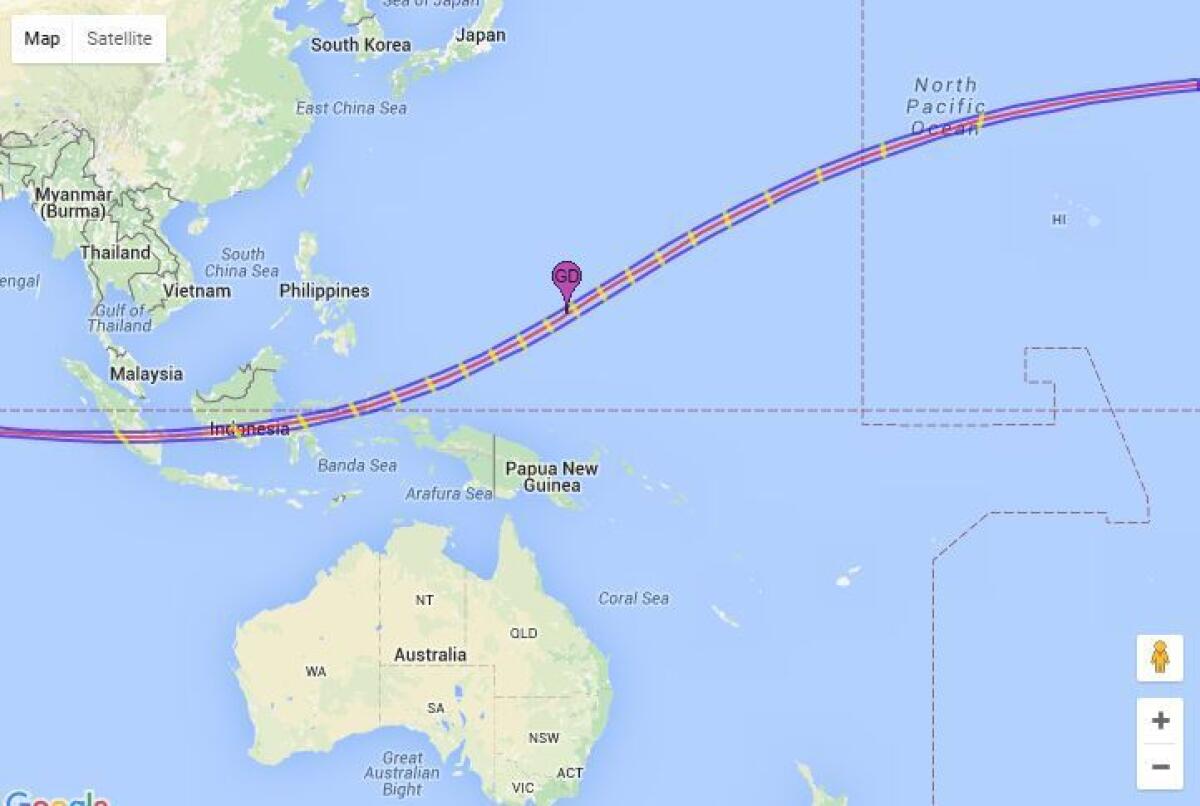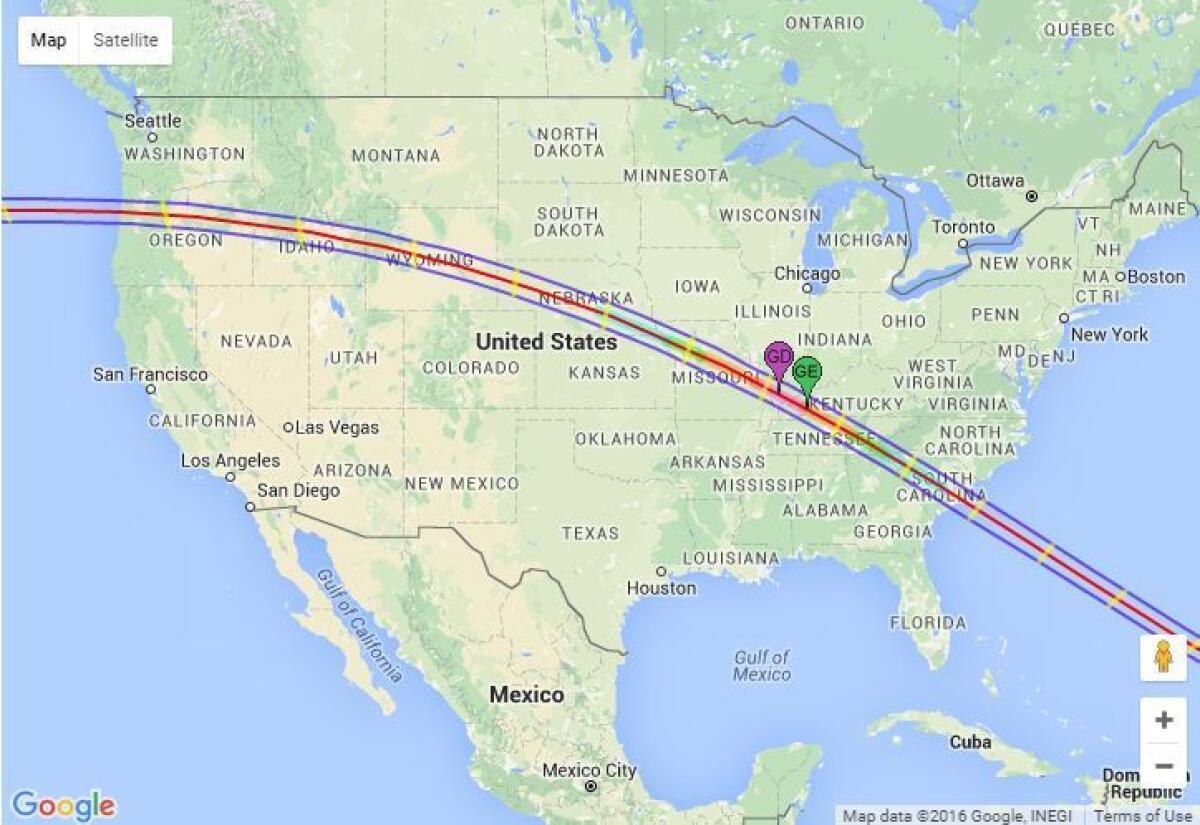Watch highlights from the total solar eclipse
Watch highlights of the total solar eclipse that reached totality at 11:38 a.m. Wednesday in Woleai, Micronesia, or 5:38 p.m. Tuesday Pacific time. (Exploratorium)
Did you miss the total eclipse of the sun? No problem! Above you'll find a highlight video of some of the best moments, courtesy of the eclipse crew from San Francisco's Exploratorium.
Beginning at 5:23 p.m. PST Tuesday, as viewed from certain parts of the world, the moon appeared to glide across the bright disk of the sun, causing the daytime sky to darken as though it were night.
The moment of totality -- when the sun was entirely obscured by the moon -- began at 5:38 p.m. and lasted just six minutes, until 5:44 p.m.
What you are witnessing when you see a solar eclipse is an amazing cosmic coincidence.
Our moon is 400 times smaller than the sun, but it is also 400 times closer to the Earth than the sun. This means it is the exact right size and right distance from the Earth to completely cover the disk of the sun, while allowing the outer layer of plasma that surrounds our star to shine.
Our planet is the only one in the solar system with a moon perfectly sized and located to occasionally obscure the sun in this way.
Like all solar eclipses, this one was only visible in real life from a very small swath of our planet.
To see it for yourself, you would have had to travel to Sumatra, Borneo, Sulawesi or parts of Micronesia -- an awfully long haul for those of us in the U.S.

NASA created this Google map showing the path of totality for Tuesday’s total eclipse of the sun. Click <a href=”http://eclipse.gsfc.nasa.gov/SEgoogle/SEgoogle2001/SE2016Mar09Tgoogle.html” target=”_blank”>here</a>to see the interactive map.
NASA created this Google map showing the path of totality for Wednesday's total solar eclipse. Click here to see the interactive map. (NASA)
However, thanks to the power of technology, those of us who did not make the trip can still watch the unique clockwork of our Earth, moon and sun.
San Francisco's Exploratorium sent two tons of equipment and a crew of 15 eclipse-watchers to Woleai, Micronesia, to broadcast the event around the world.
On the day of the eclipse the group produced a 1 hour, 15 minute live stream that included interviews with NASA solar scientists and, before and after the moment of totality, some cultural context about the people who live on the Woleai atoll.
Ahead of the event, the Exploratorium also put together this video that explains what a solar eclipse is, how it works and why it is visible only from a small part of our planet. I highly recommend watching it.
Total eclipses of the sun appear about every 18 months on average. Those of us who live in the continental United States will have a chance to see an eclipse firsthand on Aug. 21, 2017, when the path of totality transverses the entire country. A spokeswoman for the Exploratorium said the science center is already planning its coverage of the event.

This Google map shows the path of totality for the Aug. 21, 2017 solar eclipse.
This Google map shows the path of totality for the Aug. 21, 2017, solar eclipse. (NASA)
"The exciting goal is to show totality twice in two different places," she said.
Do you love science? I do! Follow me @DeborahNetburn and "like" Los Angeles Times Science & Health on Facebook.




